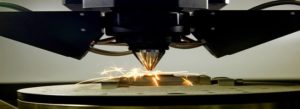February 16, 2017

The practical handbook on 3D-printing methods and tools was created as a result of DIMECC MANU program. The handbook enhances the adoption of 3D-printing technology in companies by introducing methods, tools and good examples for 3D-printing.
The potential market for 3D-printing is estimated to be 4 billion euros. In industrial applications 3D-printing is mainly used for rapid prototyping. However, the utilization of 3D-printing technologies in production is also increasing with 30 % annual growth.
3D-printing offers several advantages for production. The advantages of 3D-printing are clear when talking about complex products and objects consisting several different parts and requiring lots of machining. In 3D-printing complex objects can be made as easily as simple ones and the complexity comes for free. In addition, 3D-priting offers new opportunities for product and business innovations. With 3D-printing technology products can be re-designed enabling optimized product performance, increased material efficiency and significantly lighter structures.
DIMECC MANU program has investigated the opportunities and adoption of 3D-printing technologies. In MANU program, for example, gluing head used in Raute’s machinery and hydraulic manifold used in Metso’s machinery were produced with 3D-printing technology. The production costs of the gluing head was reduced to approximately 10 % from original machined part. The weight of hydraulic manifold was reduced by 72 %. The solution also reduces power loss and hydraulics noise in machines.
This book complies research and development work done in MANU program offering practical handbook on how to utilize 3D-pringting in industry.
Read 3D-printing Handbook here.
